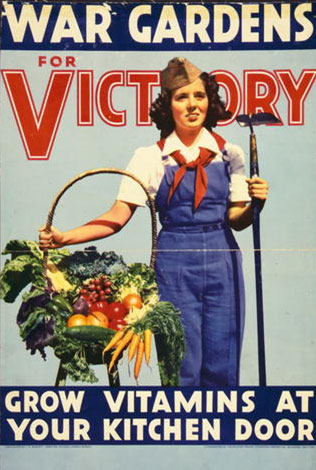When mobilizing the homefront during World War II the government reached the population in various different ways encouraging different efforts. To reach out to everyone they put out government advertisements some of these include newspapers and posters, the government also recorded oral testimonies of their time working in the nationwide war effort.
 |
| Advertisement encoraging victory gardens |
source #2 : copy from War Advertising Council/U.S Treasury Department adverstisement (1943)
source #3 : poster from the U.S. Office of Price Administration (1943)
source #4 : girl scouts planting a victory garden near San Fransico during the war (1943)
source #5 : oral histories about life at home during the war


